May 2016 will mark the one-year anniversary of The Book(ish) Box, a subscription crate spinoff of the Appraising Pages Shop that launched last spring, packaging exclusive T-shirts with fandom- and literary-inspired, useful and beautiful handcrafted objects sourced from other artisans and small shops. That first box sold less than 100 subscriptions, against the owner Justine’s expectation of 500 or more. But that’s not the end of the story.
Justine applied her e-commerce knowledge and gift for networking to increase her visibility, reached out to influencers in the literary community, and, as she says, was “very determined to double my numbers for June, and then July.” And that’s exactly what she did. At that point, she explains,
“…As a family we needed to look at how to accommodate my new hours and responsibilities. My husband had been working at a job that paid the bills, but crushed his spirit. With my new income, he was able to take a leave from work and figure out what career field he would enjoy, and in the meantime help me grow The Book(ish) Box. We’ve spent this year with him working part-time, and this month, he actually was able to leave his job permanently — and now he’s trying his hand with his own box, Bonus Round Box.”
Over the past few weeks, I’ve gotten to know Justine fairly well. She’s warm and funny — but also very focused, clear about her goals and her personal definition of success. I’ve spent a lot of time looking at her numbers and asking her questions, trying to figure out just exactly how she’s come so far, so quickly.
Justine’s a stay-at-home mother of two daughters, whose family lives in the Phoenix suburbs. She and her husband dated and then reconnected after high school. Both of their families — Justine is one of five siblings! — live nearby. Her mother is a self-made corporate Project Manager with an inspiring story of her own: With five kids and no real higher education, she has carved out a very successful career for herself with her own persistence and hard work. Justine credits her as an example, and you can really hear the pride and love in her voice when she describes her.
Justine says her family and community are so supportive and demonstrative that it empowers her to succeed. Rather than the typical “they keep me grounded,” she says in her case it’s more about starting out grounded: being reminded by the people she loves to reach higher and do more.
It’s an inspiring and, I think, moving train of thought:
“I don’t have a problem getting humble, but sometimes… I need to be reminded to reach above me, to pull myself up. Do better things. Get more grand.”
Cratejoy is an all in one subscription commerce platform that includes everything you need to start your own subscription commerce business online. Try it free for 14 days.
Chapter One: Once Upon a Time…
The way Justine tells it, it all began with a love of reading. “I started with a serious book addiction, and started writing reviews to support and fund that. Making shirts was an answer to a need for funds for author events.” She calls them “excursions” — meet-and-greets, meetups with other fans, signings and all the rest of the ways readers connect with their favorite writers and fellow fans.
“At that point is where things started shifting. I found I really enjoyed the business aspect, working out marketing became something I was passionate about, I found my designs were something that fellow literary-obsessed people connected to… All these aspects began to form this place in my life, where I felt and still feel like I’ve found my niche: this is my market, and I want to bathe in it.”
Part of that is working with similar small business owners, from Etsy and other handmade e-commerce shops, to maintain quality and that personal touch even as her business scales.
“The subscription business model was the game changer for me. It was the defining point that took a hobby, a little extra income, to a career, with the ability to actually spoil my family and have time for them too.”
As Justine says, the model solved several problems at once, filling in the gaps of her online sales. “One day I would have a bunch of orders, and then for like five days straight, nothing. I had seen a lot of subscription boxes pop up, and they seemed to be gaining traction, getting really popular. The subscription model works to solve one of the biggest issues with retail: it helps predict your sales, for at least month out.”
Justine had heard about Cratejoy from fellow sellers — in particular a friend with a very popular subscription box, Fandom of the Month Club — and she says it ticked all the right boxes for what she was envisioning.
“I loved the idea that I could quickly open subscriptions, and then go in and add adjustments and custom options later… I’m all about not spending money before making money. A platform like Cratejoy makes the old adage ‘spend money to make money’ a thing of the past.”
Justine added up the advantages, thought about conceivable stumbling blocks, and did her homework.
“My husband and I spent a lot of time discussing: What would the curation look like? Would I be able to make enough items, every month, to keep the box going?”
Justine knew that, if she applied herself to scaling her business — doubling her subscriber numbers every month, in fact — she couldn’t afford to start with the idea that she’d be making all the contents herself, every month: “The idea to include other small shops was really simple, for the market I wanted to appeal to: Handmade geeky items would set my box apart from other boxes.”
Chapter Two: Portrait of the Artist
But that’s not the only effect Justine discovered: Right away, she found inspiration in the model itself. One thing very few people think about before entering the world of subscriptions is how many fundamental paradigms and assumptions of marketing and traditional sales go right out the window, or turned on their heads.
“I make less per sale for a subscription then I do selling a single shirt — at the initial transaction — but that recurring subscription income holds a higher value in my budget. Having a subscription box has also brought more sales to my actual shop, so it has been a win all around.”
It’s not just a new way of seeing your customers and their value, but a unique path to solid, creative thinking about your brand and what it can accomplish. For Justine, curating a crate each month means holding onto every customer, by showing them a lasting value. It’s something she takes pride in upholding. Each crate is a sales asset for the next, as word of mouth and customer relationships continue to blossom and grow.
“The items on my Christmas lists were all from shops on Etsy, so I thought: If a subscription box is like opening a special gift every month, why not include items that are wishlist-worthy?
“Not little trinkets that are… exciting when you open the box, but you know they’re going in the junk drawer… I want long-term customers. That means regular t-shirts, every month; that means things that are useful: ‘Oh my gosh, I’m going to wear this shirt. Oh my gosh, I’m going to use this bath bomb…’
“There’s value in a nice product, but also an actual value — in use — that I’m aiming for.”
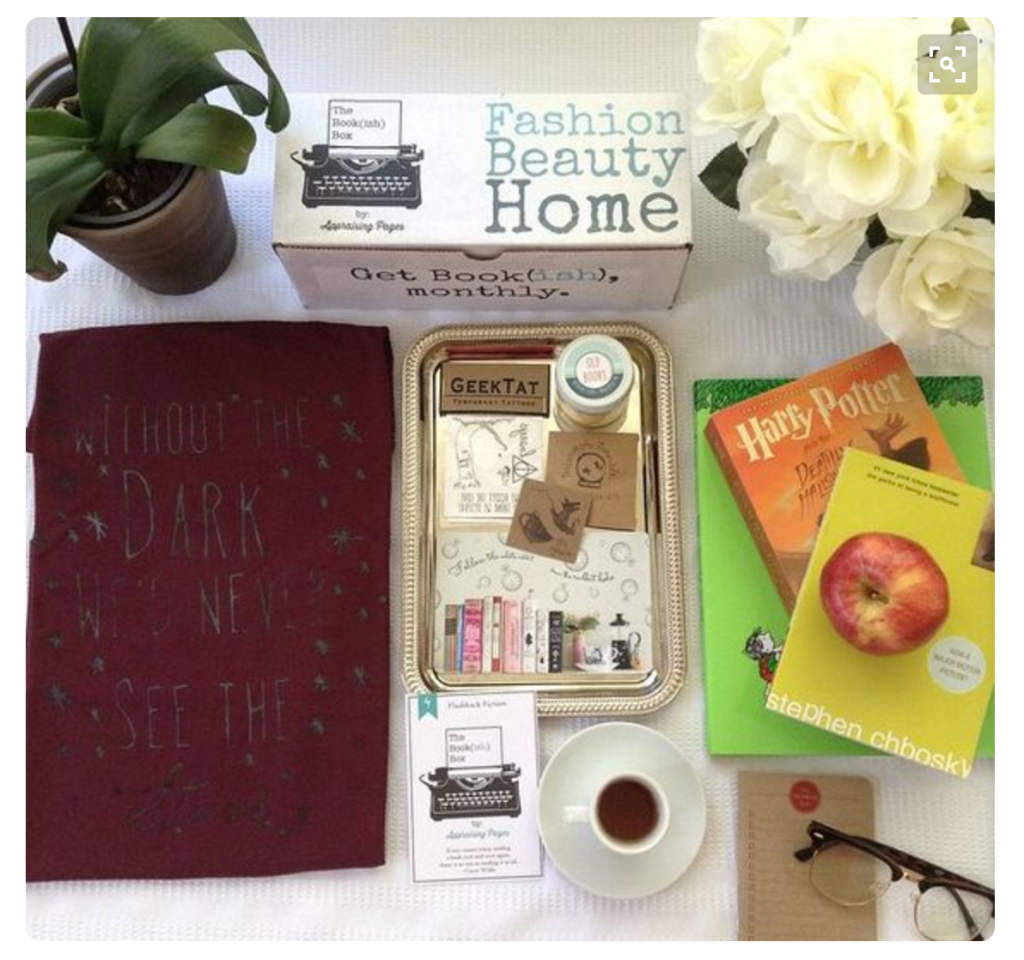 When I asked Justine about the milestones she’s celebrated over the last year, she was characteristically fact-focused and humble: “Finishing my first box curation, getting my first subscriber, my first review, first YouTube unboxing video, my first 50 and first 100 subscribers…”
When I asked Justine about the milestones she’s celebrated over the last year, she was characteristically fact-focused and humble: “Finishing my first box curation, getting my first subscriber, my first review, first YouTube unboxing video, my first 50 and first 100 subscribers…”
“…The first time I realized, as a woman, I could actually provide for my family financially: Something I have never done before. Positive net worth, feeling like I have my head around what I need to do to be successful…
“Jumping. That is the biggest milestone. Believing in what I am capable of, enough to jump.”
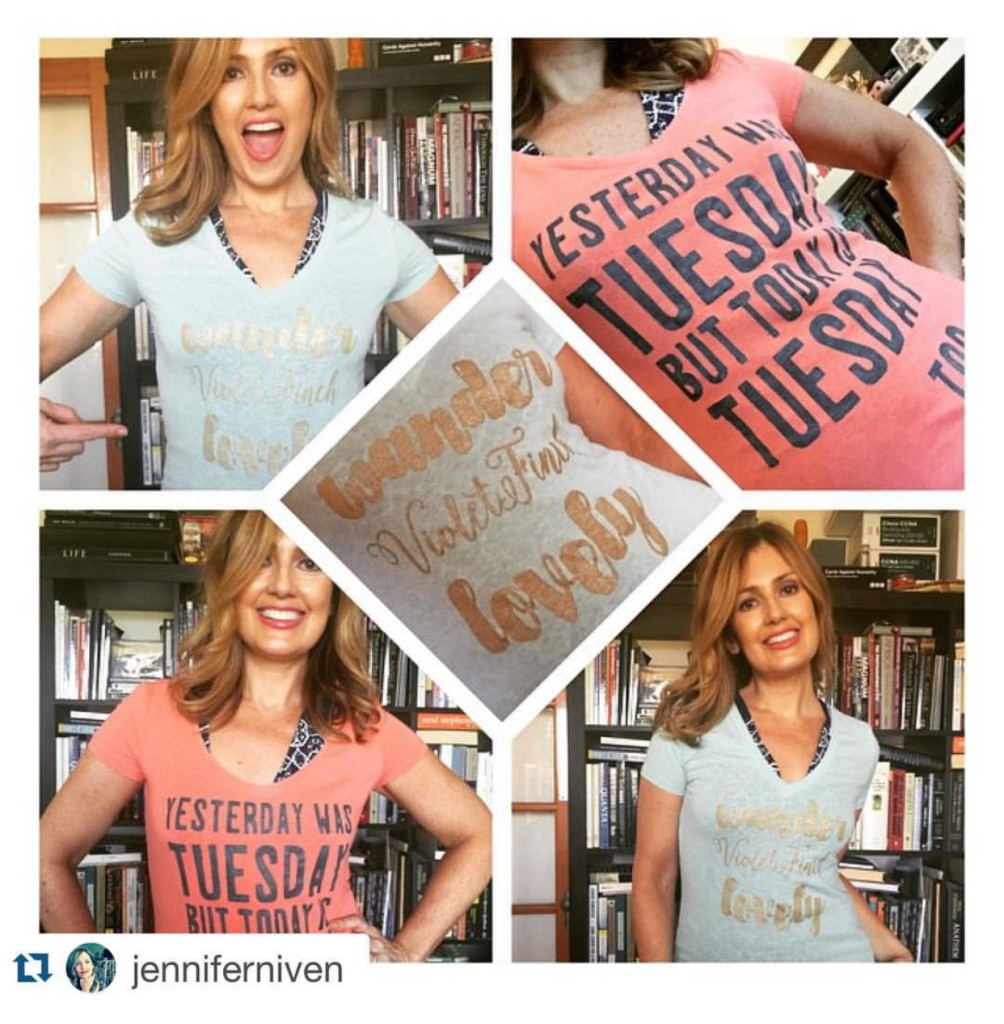
Chapter Three: Twists & Turns
Of course, being a pioneer means learning the lessons nobody else has necessarily had to face yet. It’s one of the reasons we’re so passionate at Cratejoy about sharing everything we learn: A rising tide, especially in an emerging global marketplace like subscription commerce, really does raise all boats. Justine is just as generous with the lessons she learned as she is in other aspects of her life and business, sharing what I’ve come to find is a common (and counterintuitive) lesson most super-successful sellers eventually learn:
“It’s a dead end being too worried about keeping your price low. I was very worried about international customers not wanting to pay high shipping costs, so I made it $10 and covered the rest. After a few months of paying for international shipping, I finally raised my price. I did lose a few customers for it, but now I’m not losing money.”
Every single seller I have spoken to, in fact, has told me some version of this, and talking to Cratejoy sellers is the vast majority of my job. Not all of them are as detailed as Justine, however, or as far-reaching in the scope of their vision, so I asked her for more financial rules of thumb. I think for a lot of artists and creative people, we have a mental block about running a business, or being an entrepreneur, or developing salesmanship, and I’m always curious about how others have gotten over that hump.
I knew Justine’s answer would be profound or striking, since she does come specifically from this art and hobbyist background, but I was still surprised by what she said about this:
“When I first started the boxes, my plan was to only spend 1/3 of my sales on actual cost. At first, I did, and it worked, but I really wanted to start amping up my sales which would lead to more profit in the long run. So about four months after launching, I decided to go with putting 50% of my sales into costs, and I am seeing better growth, more positive reviews, and lower churn.
“I think there is this myth that crates have slim margins, but all I can say to that is, maybe the curation isn’t strong enough… If you’ve got a good product, impressive curation, and visceral presentation (and unboxing experience), you don’t have to stuff your boxes full.”
I’ve heard other sellers say things like that, but never so clearly. It really opened my eyes to just how personal and intimate a curated subscription can really be. Whether based in a lifestyle or a monthly activity, a belief system or a shared love of textiles, whatever it is, I’m always struck by how far sellers, and subscribers, are willing to go in pursuit of that relationship.
It’s almost like a pen-pal or love letter or, as some have described it, a monthly gift from a slightly different version of yourself: You trust the seller’s curation enough to collect things on your behalf. That’s some powerful stuff, without a real parallel in regular e-commerce, but it’s a very specific passion that you learn to recognize in conversations like this.
“I think as a subscription crate owner, you need to be confident enough in what you are shipping that you feel comfortable asking a realistic price for it. That confidence should come from the strong belief that you are providing quality items that are worth what is being paid.”
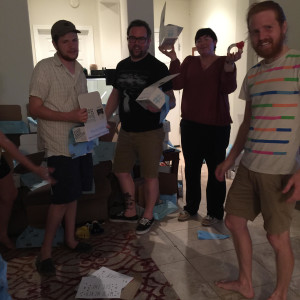 Chapter Four: Happy Endings
Chapter Four: Happy Endings
There’s nothing wrong with finding a niche or a twist on a good idea and going for it — lots of admirable subscriptions and businesses are based in just that kind of creativity — but there’s something special about talking to sellers whose passion in real life happens to dovetail with the subscription they’re created. Not merely due to the philosophical tidiness there, which is appealing of course, but because of the curational advantage, or as Justine says:
“I would say don’t make a box about something you don’t love. I see too many boxes pop up and you can tell the owner has no idea how to please the market they are after. For me, it has been so beneficial to know my market in a personal way, because these are people like me.”
Not that a head for the marketplace, and especially for numbers, is a terrible thing to bring to the table. When I ask for financial guidelines, rules of thumb, Justine fires off several immediately, suitable for prelaunch consideration:
- I would stay away from spending tons of money right off the bat.
- If you don’t use a platform like Cratejoy, she says, you may end up in the red. (“I’ve never gone negative,” she grins.)
- Seriously, absolutely price everything out before setting your price point.
- Too many companies estimate, lowball their offering, and then bleed out any possible profit.
- Also: Everything costs more then you originally think, but you can always pay less then you are originally quoted.
- Starting out, you just need to know: The view on the inside is going to be different then the view walking up.
“As you learn more about how you work best,” Justine continues — I am obsessed with the minutiae of her schedule, as a mother of two under-sixes with a gargantuan home business — “Your schedule should conform… If I am late on a deadline, I’m a high level of stressed. It impacts relationships, because when you own your own business, you can’t turn off work-brain… I’m so grateful for the freedom in my personal life that I’ve gained by being my own boss. The flip side is that it’s a lot to have on your shoulders.”
It’s a good point — we hear time and again here at Cratejoy about the pains of scaling, about knowing when to outsource, and what hustle is productive versus what kinds of hustle leads to burnout, all of those questions any ambitious crafter or artisan must ask like anyone else — but I know something else is coming, it’s just a warmup:
“I am the least organized person in the world! That leads to a lot of late nights, last-minute issues… But for me, that works. I never set up strict plans. I think the key to make your business work for you is being flexible enough with your goals, and your methods to achieve those goals.”
It’s hard to believe, looking at what Justine’s accomplished and how readily she wears her heart on her sleeve, but I can take her at her word. “If you’re the least organized person in the world,” I want to ask, “Then where am I calling you from?”
Chapter Five: To Be Continued…
“I think the subscription market is going to see a whole slew of people with existing shops, finding a way to bring the subscription model into what they are currently offering,” Justine offers. It’s come to be one of my favorite parts of these conversations, looking into the crystal ball and seeing what else modern technology might make possible.
And what about Justine? “In the future, I would like to see my husband’s subscription box grow. I would like to continue to move into more of a mentoring role, for other launches. For my personal subscription box, I want to see it grow in new ways, like spinoffs. I want to work myself into more large marketing opportunities.”
Based on the last year, those things seem minutes away, but I know better than to tease her for her humility: It’s key.
“I would say don’t be afraid of being flexible, and humble: Your ideas won’t always be right on the mark, and that’s okay…”
“I would say celebrate all the milestones, big and little, and even the ones that set you back, because learning what sets you back early on is actually a huge positive.”
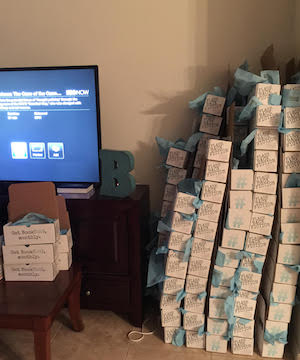
And there you have it.
I don’t have a lot to add to this case study, although I think I would be remiss here if I didn’t point out that the majority of one-to-one e-commerce, across the web, is women selling to other women. Add to this the fact that across the board, “geek” and fandom boxes are the highest-growing and most popular by far (both as gifts and for personal enjoyment), and you may find another reason Book(ish) Box and Fandom of the Month, two feminine-centric geek/jewelry boxes, are a couple of the greatest success stories of the last few years:
Being told over and over that you don’t exist doesn’t change the amount of money in your wallet.
Just something to think about, as you consider your own passions — and where they’re possibly underserved. You can’t go wrong by following your own joy, and trusting there are those out there who share it. Now it’s just time to find it. Or as Justine says: To jump.
Cratejoy is an all in one subscription commerce platform that includes everything you need to start your own subscription commerce business online. Try it free for 14 days.
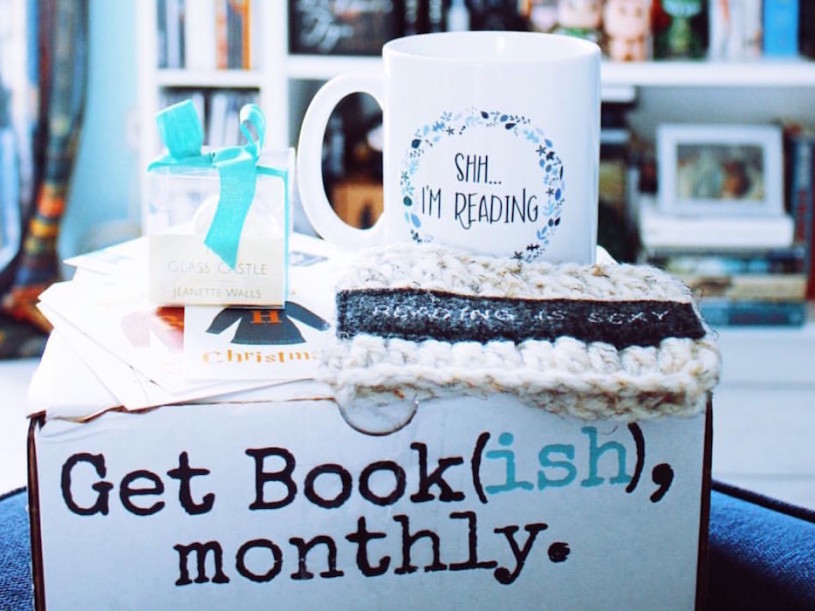




Loved how you made this into a cute story. Great job!